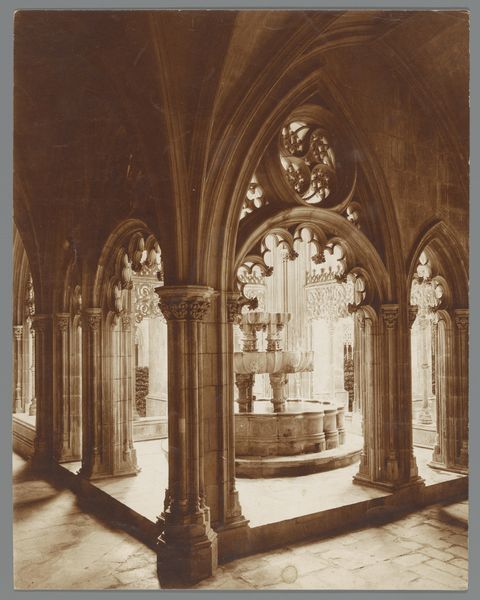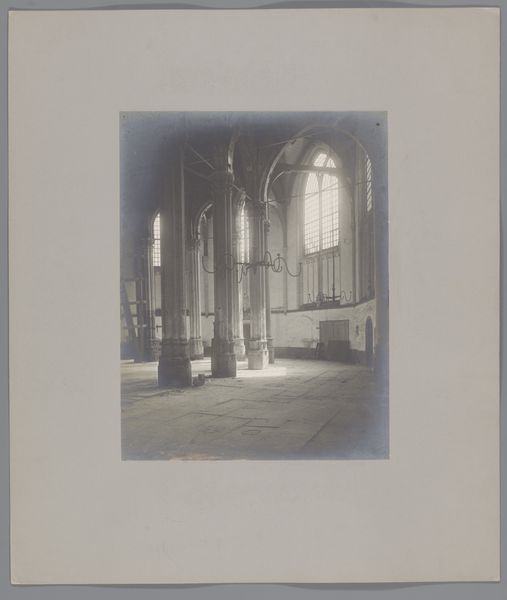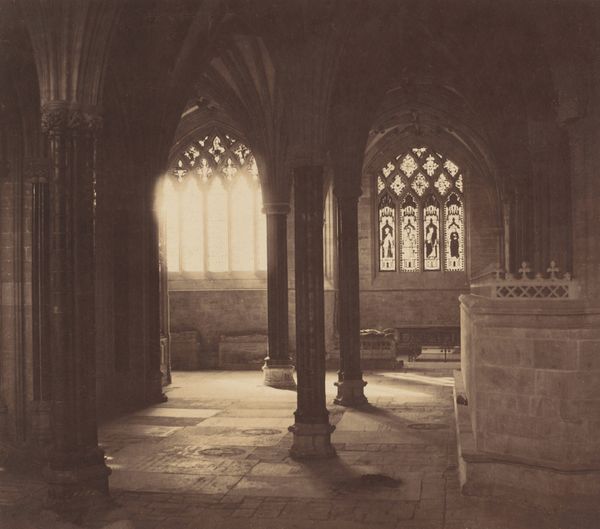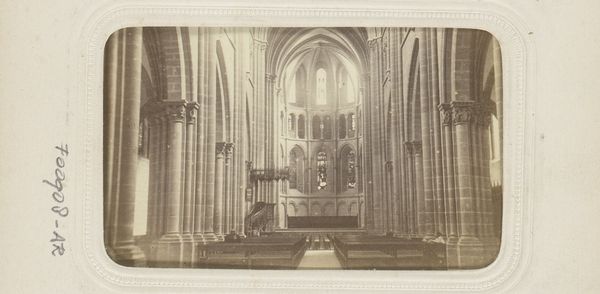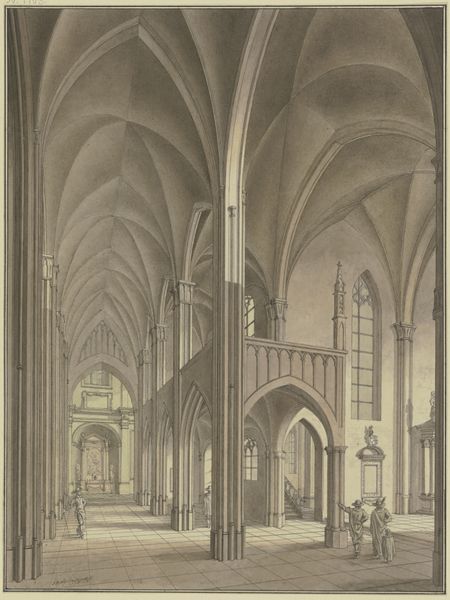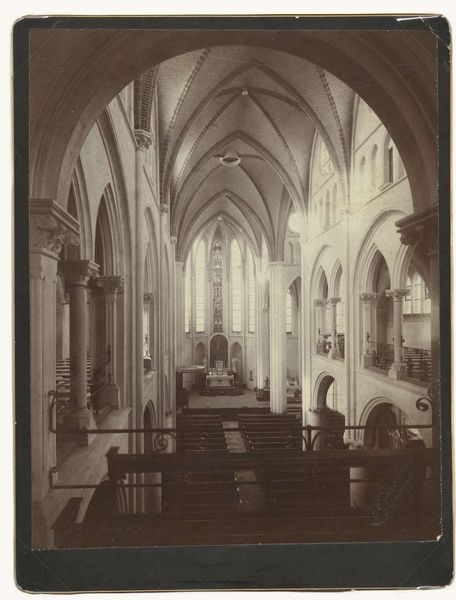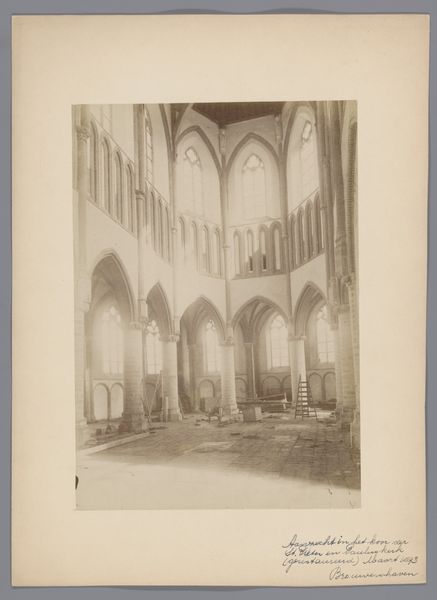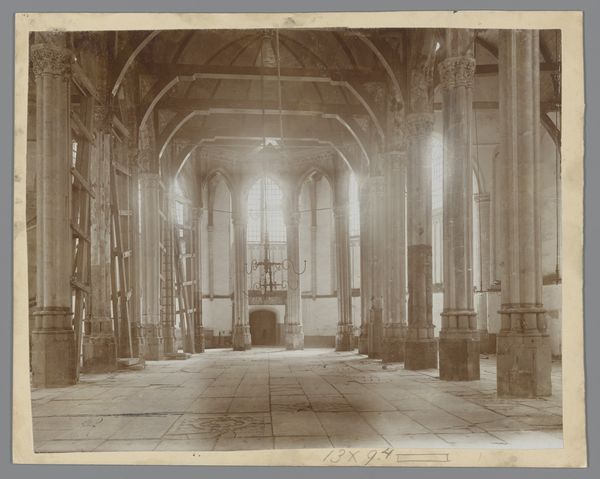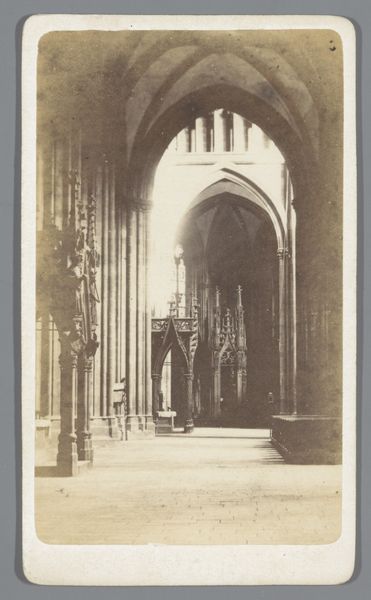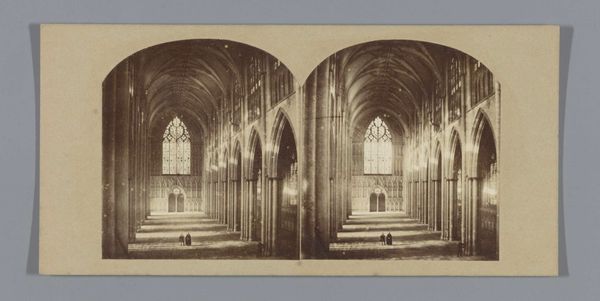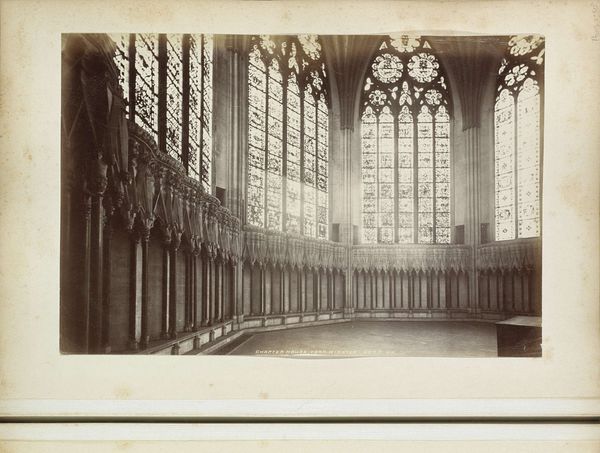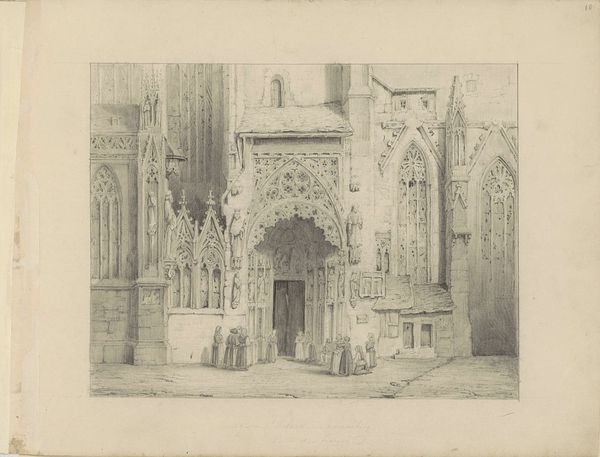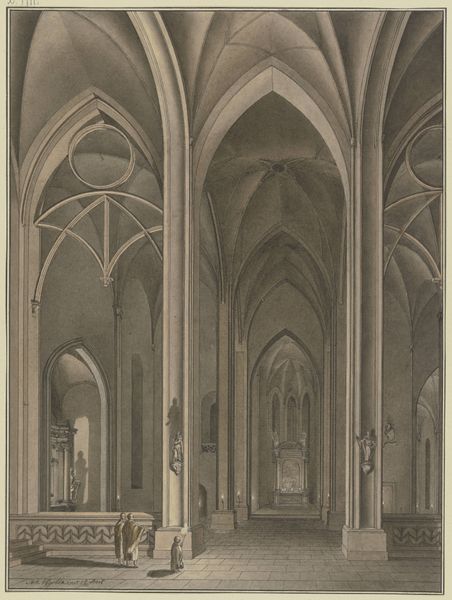
Salisbury Cathedral - The Nave, from the South Transept 1858
0:00
0:00
Dimensions: 30.2 x 31.1 cm (11 7/8 x 12 1/4 in. )
Copyright: Public Domain
Editor: So, this gelatin-silver print, “Salisbury Cathedral - The Nave, from the South Transept,” taken by Roger Fenton in 1858, captures the interior of the cathedral. It's quite shadowy; the architecture feels imposing. What do you see in this piece beyond a historical record? Curator: I see a deliberate engagement with power structures and representation. Think about the context: this is mid-19th century Britain. The church wasn't just a religious institution; it was deeply embedded in the social and political fabric, often upholding colonialist ideologies. Fenton, though lauded for his technical skill, was also operating within those power dynamics. Does this image challenge or reinforce the authority of the church? Editor: That's interesting. It almost feels like the vastness and darkness of the space diminishes any individual within it, creating a sense of awe. Is that perhaps unintentionally reinforcing its power? Curator: Precisely! And consider the perspective. We're positioned looking *into* the church, almost as outsiders peering into a domain of authority and tradition. Photography at the time was also solidifying its role in documenting and, in a way, controlling the narrative of history. This image isn’t just about pretty arches; it’s about who gets to define what’s sacred, and who gets to record it. Where do you see room for resistance, even subtle resistance? Editor: Maybe in the imperfections of the early photographic process itself? The softness of the image, the way light and shadow play... it hints at a reality that's more complex and fluid than a stark, perfect representation would allow. Curator: Exactly! It opens a crack, allowing for alternative readings. The very limitations of the medium push against the imposing, rigid structure it portrays. It gives us, now, the opportunity to dissect it. Editor: That's given me a completely different perspective; I never thought of architectural photography as engaging with power structures. Curator: It’s always about the power to represent and, in doing so, to shape perception. Seeing that dynamic is essential.
Comments
No comments
Be the first to comment and join the conversation on the ultimate creative platform.
